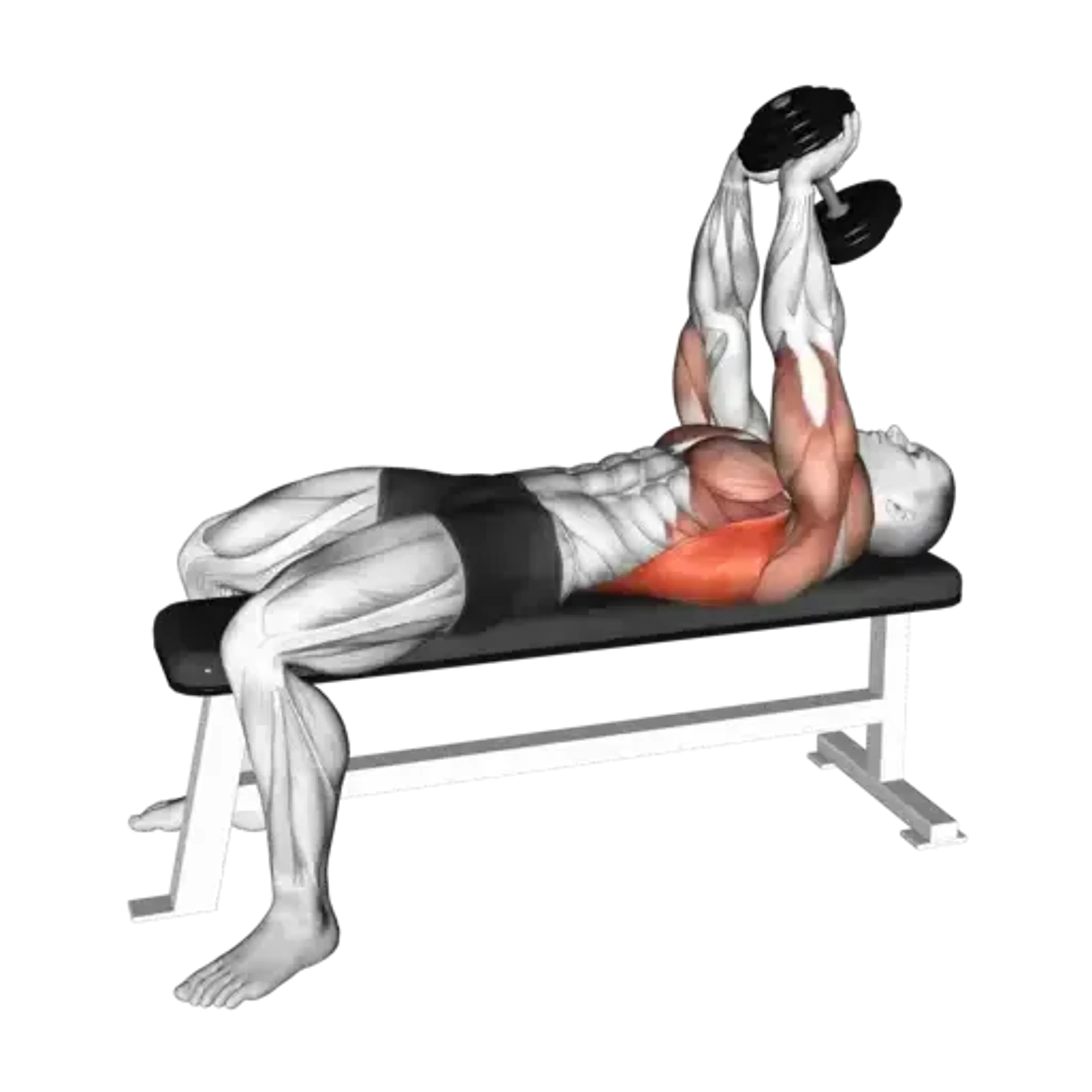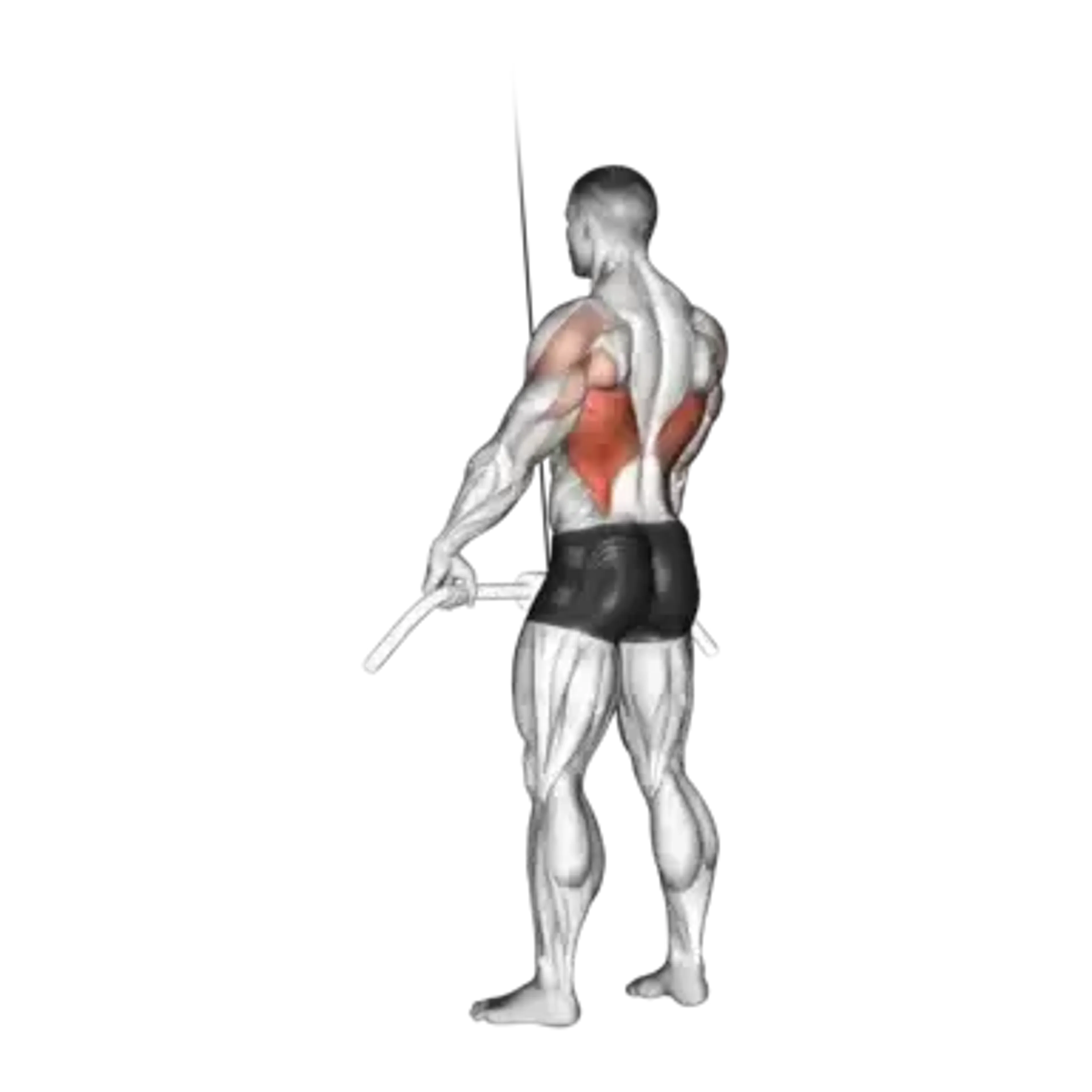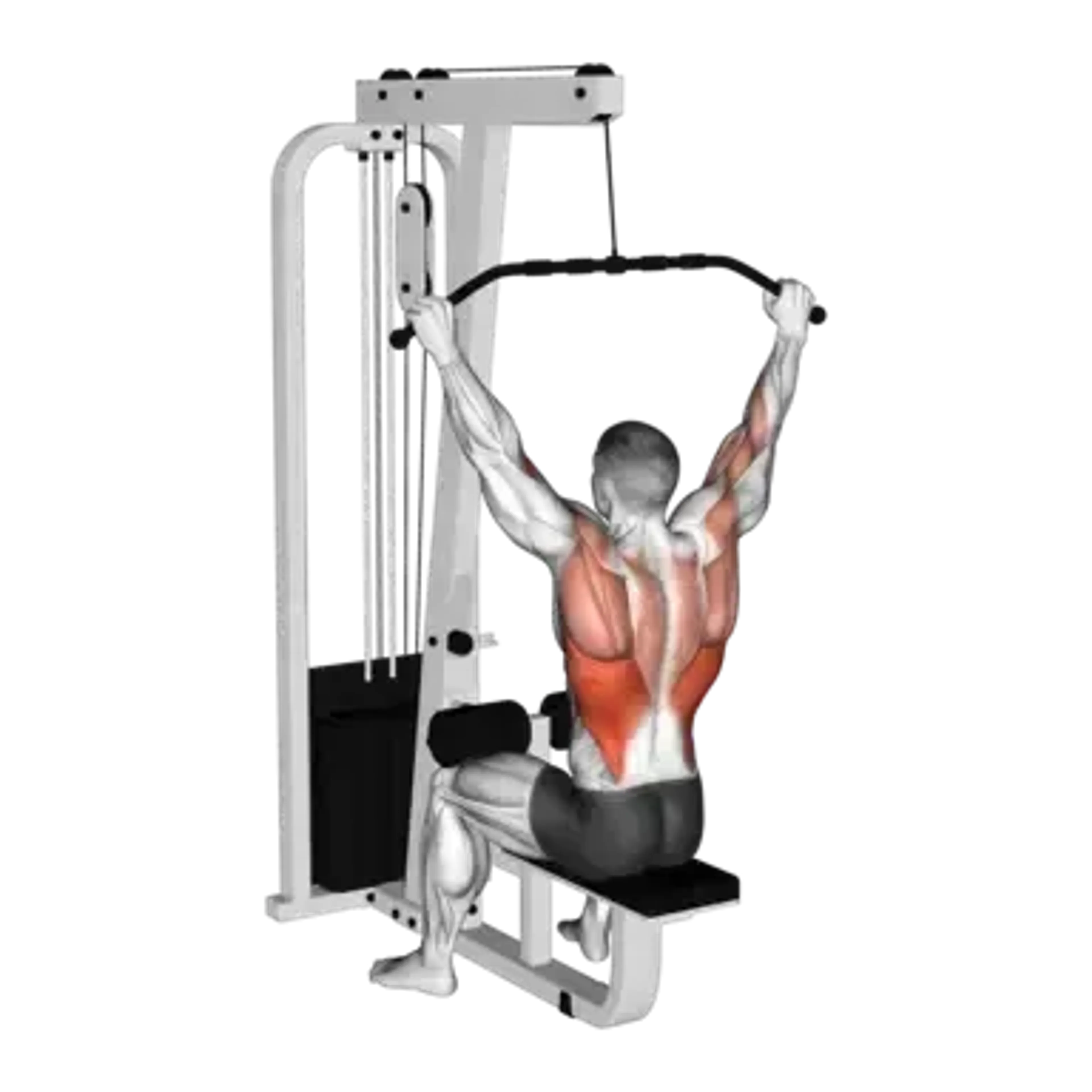Barbell Pullover
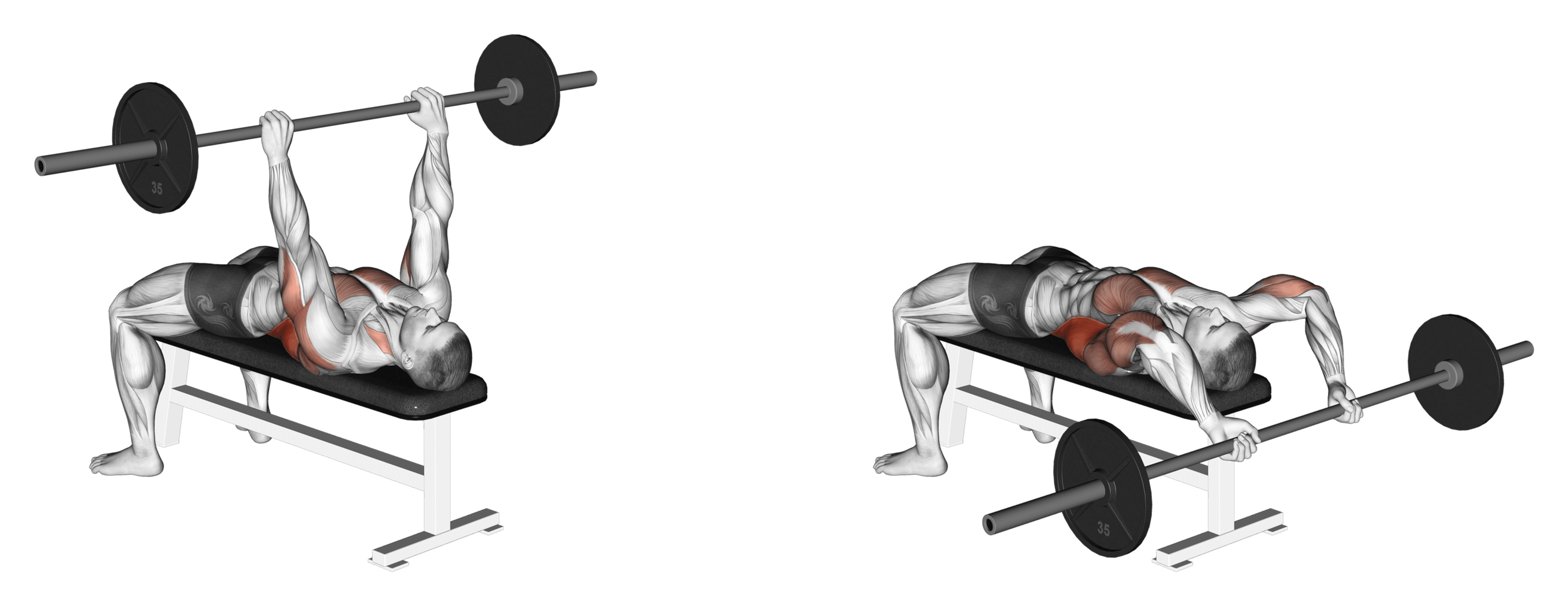
Overview
- Primary Focus:
- Back and chest.
- Equipment:
- Barbell and bench.
- Difficulty:
- Intermediate.
General Information
Barbell Pullover is a compound exercise that primarily targets the back and also engages the triceps, shoulders, and chest. It is an intermediate-level movement that uses a long lever to load shoulder extension, creating a deep stretch and a strong lat-driven finish.
It works well in a standard gym with a barbell and flat bench, and it fits home gyms that have the same basics. Because the resistance profile is heaviest in the stretched position, it excels for hypertrophy when sets are controlled and the rib cage stays stacked.
Use it as an accessory in back or chest sessions to emphasize end-range shoulder extension and improve lat length-tension awareness. Slower tempos and brief pauses near the stretch can heighten lat engagement without excessive load.
Common variations include the Dumbbell Pullover and Cable Pullover, which slightly change stability and the tension curve. Choose the barbell when you want bilateral loading and a consistent hand path; switch to other options if your shoulders prefer a freer grip or continuous cable tension.
Muscles Worked
- Latissimus Dorsi
- Primary
- Pectoralis Major
- Primary
- Rhomboid Major
- High
- Serratus Anterior
- High
- Teres Major
- High
- Deltoid
- Medium
- Triceps Brachii (Long Head)
- Medium
- Erector Spinae
- Low
- Lower Trapezius
- Low
- Rectus Abdominis
- Low
- Triceps Brachii (Lateral Head)
- Low
- Triceps Brachii (Medial Head)
- Low
Instructions
- Set a flat bench perpendicular to a secure rack area. Load a light barbell and lie with upper back on the bench, feet planted, hips slightly lowered.
- Grip the bar just outside shoulder width with straight wrists. Keep a soft bend in the elbows throughout the movement.
- Start with the bar above the chest. Brace the midsection, keep ribs down, and set shoulder blades gently back and down.
- Lower the bar in an arc behind the head by allowing shoulder flexion, maintaining the elbow bend. Move only as far as you can without rib flare or shoulder discomfort.
- Pause briefly in the stretched position while keeping the lats engaged and the spine neutral.
- Drive the bar back over the chest by pulling the elbows down and toward the torso, feeling the lats shorten rather than pressing with the arms.
- Keep ribs stacked over the pelvis; avoid arching the lower back or shifting to the toes as the weight returns over the chest.
- Repeat for controlled reps, stopping 1-2 reps before form breaks. Rack or lower the bar safely when finished.
Common Mistakes
Injuries
Barbell Pullover is a medium risk exercise when performed with proper technique.
Most strain occurs at end-range shoulder flexion and through the anterior shoulder. Limit depth to a comfortable range, keep elbows softly bent, and maintain stacked ribs to avoid lumbar overextension.
Use moderate loads and smooth tempos. If you feel sharp shoulder pain, reduce the range, switch to a lighter implement, or choose a regression such as a Dumbbell Pullover with neutral grip. Stop the set if symptoms persist or radiate down the arm.
Alternative Exercises
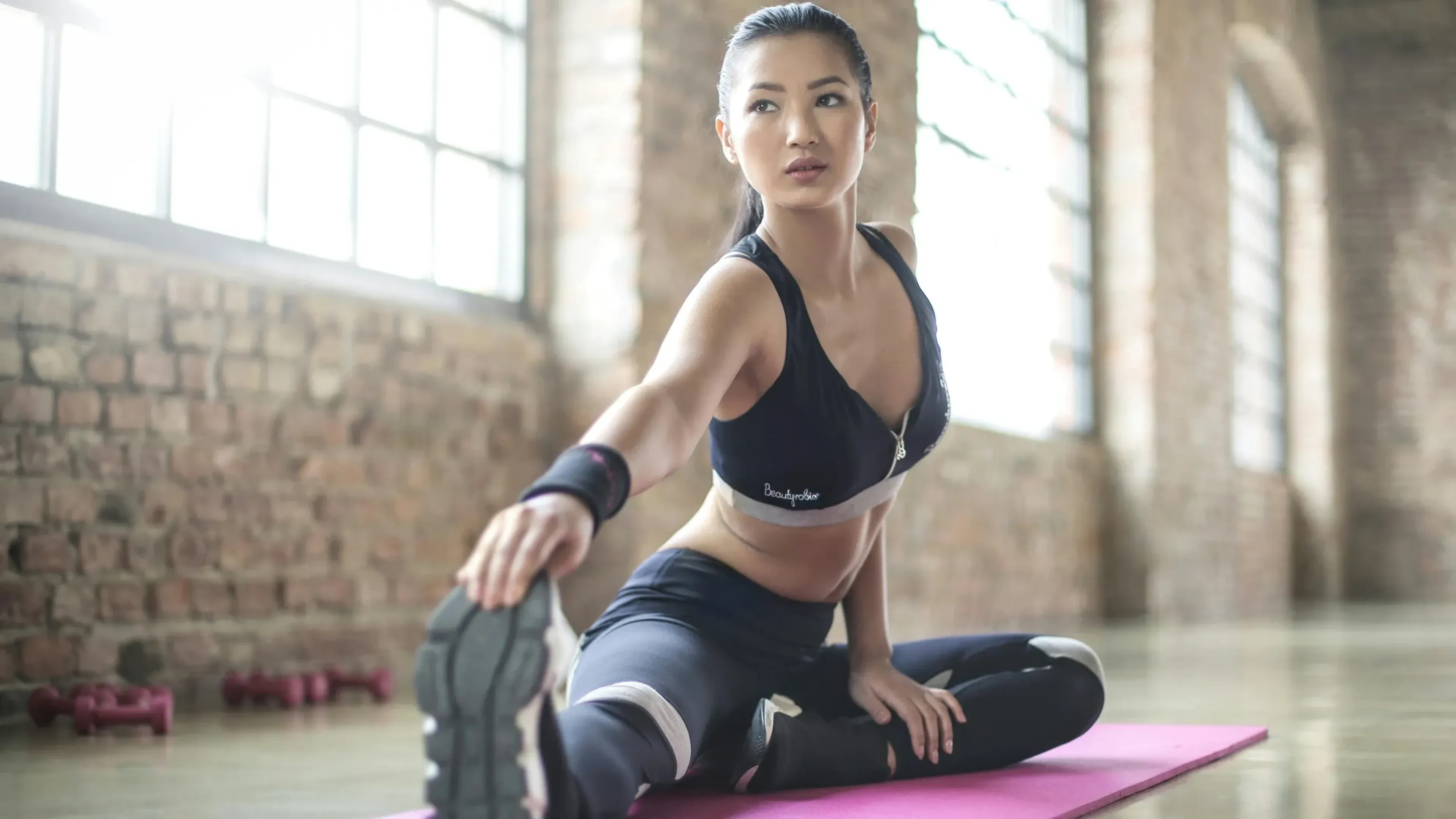
Frequently Asked Questions
- Q: Does the pullover work lats or chest?
Both. Grip width, elbow path, and torso position shift emphasis: a controlled arc with ribs stacked and elbows slightly bent typically biases the lats, while a higher arc over the chest can increase pec involvement.
- Q: How heavy should I go?
Use moderate loads that you can control for 8-12 reps with a pause near stretch. Avoid maximal singles; prioritize range and tension over load.
- Q: Can I do it without a bench?
A floor setup limits range and changes the arc. A stable bench is preferred; if unavailable, consider a light Dumbbell Pullover with small range.
- Q: Where should it go in a workout?
Place it after your main rows or presses as an accessory, or early in the session with light loads to prime shoulder extension and lat engagement.
Overview
- Primary Focus:
- Back and chest.
- Equipment:
- Barbell and bench.
- Difficulty:
- Intermediate.
